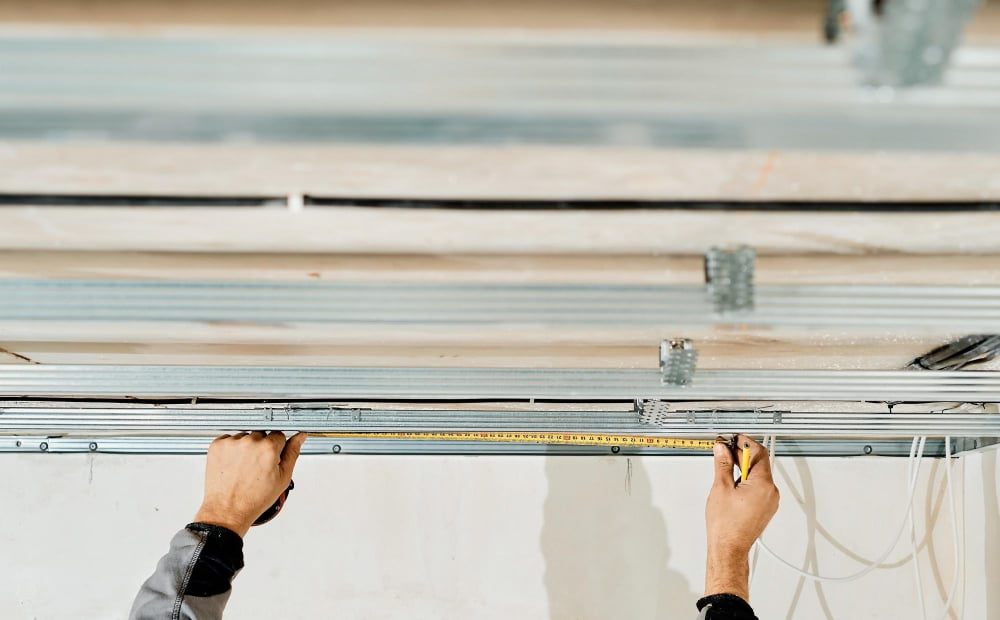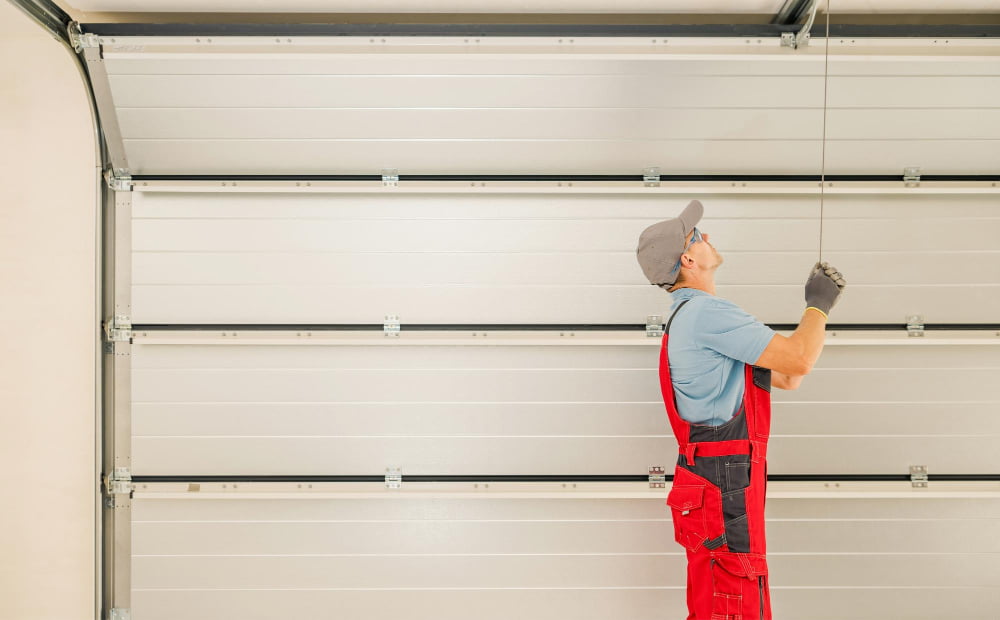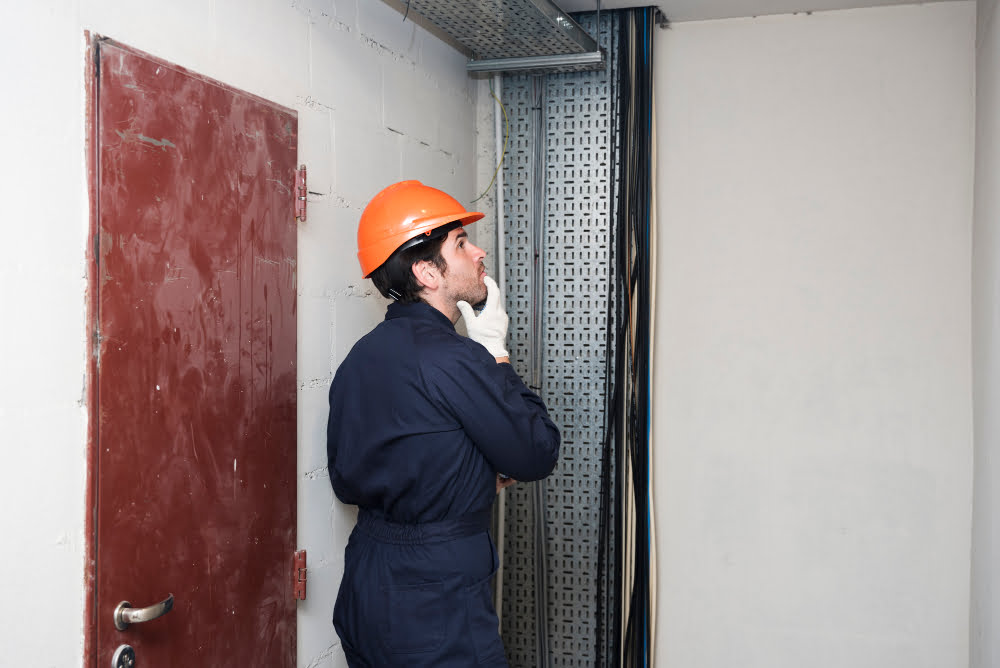Installing a garage door is a process that varies in duration depending on numerous factors such as the complexity of the door mechanism and level of expertise involved.
Installing a garage door can typically take anywhere from 3 to 4 hours if you’re a seasoned professional, and up to a full day if you’re a DIY enthusiast with basic mechanical skills.
This time frame includes removing the old door, preparing the opening, and installing the new door and hardware.
However, the exact time can vary depending on the type of door, the condition of the garage, and your experience level.
Read on to get a detailed understanding of what the process involves, the tools you’ll need, and some handy tips to make the job go smoother.
Key takeaways:
- Garage door installation can take 3-4 hours for professionals, longer for DIY.
- Factors affecting installation time include door type and condition of the garage.
- Choosing the right door and installation kit is crucial for a seamless fit.
- Professional assistance ensures safety, expertise, and maintenance guidance.
- Possible hurdles include uneven floors, misaligned tracks, and missing parts.
Understanding the Garage Door Installation Process

The installation process involves several crucial steps. Initially, the tracks that will bear the door’s weight have to be anchored securely into the garage’s framing. Then, the panels of the door are assembled and installed onto these tracks. This usually starts from the bottom going up.
Next, the springs, if any, are installed and subsequently, the opener. The springs are particularly key in the operation of the door, absorbing most of the door’s weight, thus making it easier to open and close.
Finally, the safety features are installed. This includes infrared sensors and automated reversal systems, which are designed to counter accidental closure when there’s something – or someone – underneath. This process culminates with a series of tests to ensure everything is functioning as it should.
The process is intricate and labor-intensive, hence professional help comes highly recommended, especially for inexperienced homeowners. Without expertise, it is easy to make mistakes that could lead to damaging the door, or worse still, causing bodily harm.
Selecting the Right Garage Door and Installation Kit

First, consider the size and design that match the architectural style of your home. Choose a solid, durable material, such as steel, wood, or composite, based upon your region’s climate and your personal preference. Additionally, ensure the selected door is equipped with good insulation, important if your garage is attached to your home to reduce energy costs.
When it comes to installation kits, those that include a rounded track, reliable torsion springs and appropriate hardware should be preferred. Read product reviews and buy a high-quality kit that aligns with your garage door’s technical specifications. This ensures a seamless fit and reliable operation. A good kit should also include a door opener, its assembly accessories, and a detailed instruction manual. Professional installers may offer their own specialized hardware and accessories, which often exceed the quality of standard installation kits.
Lastly, decide between doing it yourself or hiring a professional. If you opt for a DIY install, ensure you feel comfortable with the task. A basic understanding of the tools and steps involved is necessary. On the other hand, hiring a professional can save time and potentially avoid mistakes that could compromise the door’s function or safety.
Step-by-step Guide to Residential Garage Door Installation

To begin with, ensure the track is accurately aligned to avoid possible irregularities during operation. Fasten all parts of the garage door track; this includes the vertical, curved and horizontal pieces.
Next, the springs are attached to the pulley system, significant in keeping tension in balance. Careful handling is required due to the potential risk with high-tension springs.
With the springs secured, it’s time to install the panels. Starting from the bottom, gradually work up the frame. Ensure each panel is level before attaching the hinges and brackets.
Subsequently, position the rollers in the brackets and track to facilitate smooth door movement. Security of the rollers in the track is pivotal to avoid possible derailment.
Lastly, the spring assembly must be attached to the door, adhering to meticulous attention to detail. The tension in the springs is adjusted to open and close the garage door without difficulty.
Bear in mind the complexity of each procedure. Missteps not only extend the installation time, but can also pose safety risks or impair the door’s functionality. With the right tools and knowledge, these steps will navigate you through a successful installation. However, considering the intricacy of the task, professional help is recommended.
Importance of Professional Assistance in Garage Door Installation

Engaging a professional for garage door installation brings invaluable benefits. Firstly, they bring a wealth of expertise from years of industry experience that goes beyond basic installation. Whether it’s the right fit or understanding how different materials function in diverse conditions, professionals have the answers.
Secondly, they are adept at ensuring safety throughout the process. Garage doors are heavy and their installation involves complex parts like springs under high tension. Mistakes can lead to severe injuries. Professionals are trained to handle these safely, mitigating this risk.
Finally, they can provide crucial guidance on maintenance and longevity of your garage door. They can alert you to potential issues, recommend routine checks, and give advice on prolonging its life.
Thus, professionals contribute significant value to the process. They ensure the project is executed efficiently and safely, while also imparting essential knowledge for future maintenance.
Factors Influencing Time Requirement for Garage Door Installation

Several variables play into the duration of a garage door installation. One of the primary factors is the type of door being installed. Standard single-car garage doors may require approximately three to four hours. In contrast, double doors or ones with complex mechanisms might necessitate up to a full working day.
The level of expertise of the person conducting the installation also has a significant impact. Trained professionals could complete the task efficiently, whilst saving the potential time and trouble of rectifying errors that could happen with less-experienced installers.
Additionally, the condition of your garage plays a role. If structural adjustments or repairs are required before the installation, more time will be needed. All these factors should be considered while planning a garage door installation, to accurately estimate the time requirement.
Possible Hurdles in Garage Door Installation

Inconsistent floor levels can pose challenges, as an uneven surface affects the alignment of the door. It’s crucial to ensure your garage floor is level before proceeding with installation.
A second potential difficulty lies with misaligned tracks. The door won’t operate smoothly if the track positioning is off. Precision is crucial in track installation.
Insufficient headroom and backroom could also complicate the process. The spectra of headroom are room above the door opening, while backroom is space behind the opening. Both should be adequate to accommodate the door when it’s fully open.
Existing wiring may interfere with installation. You must avoid any electrical wiring, plumbing, or structural elements when installing the door and automatic opener.
Lastly, incorrect or missing parts in installation kits could hinder your progress, underscoring the importance of verifying all components before starting.
Overcoming Common Issues in Garage Door Installation

To ease your installation journey, expect and prepare for potential issues.
One widespread problem arises from incorrect measurements, which can cause ill-fitting doors leading to operational inefficiencies and wear and tear. Thus, meticulous measurement of the garage opening is paramount for ensuring a smooth fitting door.
Secondly, a malfunctioning automatic reversal system can pose safety hazards. A regular check post-installation can detect any misalignments, and timely adjustments can help the reversal system function optimally.
Another frequent issue pertains to the springs. These crucial yet delicate components can easily break if not handled correctly, making it critical to follow the manufacturer’s instructions on tightening and adjusting the springs.
Lastly, the improper installation of weather seals can lead to cold drafts or leaks in the garage. Verify the seal integrity by checking for light seeping through or feeling for drafts around the closed door. This can help fix gaps and ensure a weatherproof garage.
FAQ
How long does it take to remove and install new garage doors?
It typically takes between 4-6 hours to remove and install new garage doors, however, the duration may be shorter if the new system is compatible with the existing structure.
How long does it take to install a 16×7 garage door?
The installation of a 16×7 garage door, assuming a same-type replacement and optimal conditions with an existing structure, typically takes between three to four hours.
Is it hard to install a garage door?
Installing a garage door can indeed be a challenging and potentially dangerous task, particularly if the correct tools and appropriate skills are not utilized.
How long does it take to install a 9 by 7 garage door?
The installation of a 9 by 7 garage door typically takes about 4 to 6 hours, although this can vary depending on factors like the type of installation and the compatibility with the existing structure.
What are common complications that may extend the installation time of a garage door?
Common complications that may extend garage door installation time include unexpected structural issues, inadequate clearance for the door mechanism, or incorrect or faulty parts delivered for the project.
How much time should be allocated for the maintenance and tuning of a newly installed garage door?
Allocate at least twice a year for the maintenance and tuning of a newly installed garage door to ensure its optimal performance.
What factors must be considered in the installation process that could potentially shorten or lengthen the timeline?
Factors that could potentially shorten or lengthen the garage installation timeline include the complexity and size of the design, the type of materials used, weather conditions, permit acquisition, and the proficiency and availability of hired contractors.